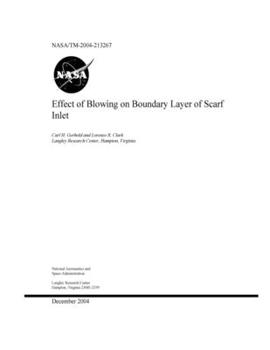Effect of Blowing on Boundary Layer of Scarf Inlet
When aircraft operate in stationary or low speed conditions, airflow into the engine accelerates around the inlet lip and pockets of turbulence that cause noise and vibration can be ingested. This problem has been encountered with engines equipped with the scarf inlet, both in full scale and in model tests, where the noise produced during the static test makes it difficult to assess the noise reduction performance of the scarf inlet. NASA Langley researchers have implemented boundary layer control in an attempt to reduce the influence of the flow nonuniformity in a 12-in. diameter model of a high bypass fan engine mounted in an anechoic chamber. Static pressures and boundary layer profiles were measured in the inlet and far field acoustic measurements were made to assess the effectiveness of the blowing treatment. The blowing system was found to lack the authority to overcome the inlet distortions. Methods to improve the implementation of boundary layer control to reduce inlet distortion are discussed. Gerhold, Carl H. and Clark, Lorenzo R. Langley Research Center NASA/TM-2004-213267, L-18369 WU 781-30-14-01 ACOUSTIC MEASUREMENT; AIR FLOW; BOUNDARY LAYER CONTROL; ENGINE INLETS; BLOWERS; BLOWING; BOUNDARY LAYERS; LOW SPEED; NOISE REDUCTION; STATIC PRESSURE; TURBULENCE
Format:Paperback
Language:English
ISBN:B08F6QNQCG
ISBN13:9798672062693
Release Date:January 1
Publisher:Independently Published
Length:36 Pages
Weight:0.24 lbs.
Dimensions:0.1" x 8.5" x 11.0"
Customer Reviews
0 rating





